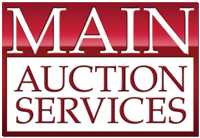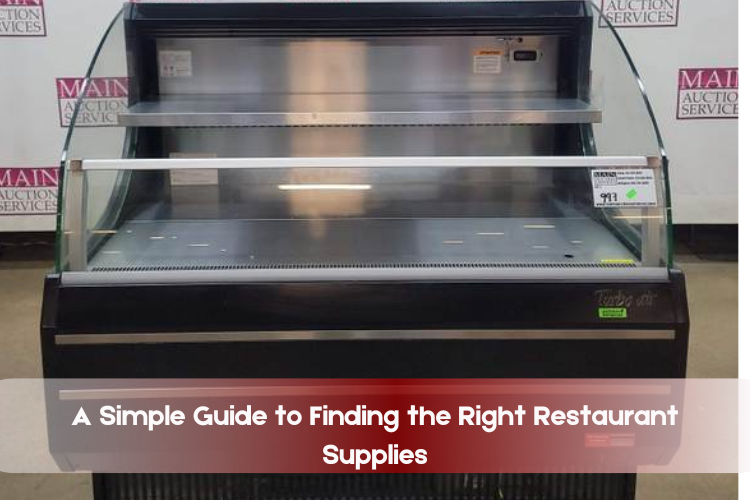Opening a restaurant is an exciting but challenging venture. One of the biggest hurdles for restaurant owners is sourcing the right equipment and supplies. Finding the right restaurant supplies is essential for running an efficient kitchen, offering top-notch service, and keeping costs manageable. Whether you're opening a new restaurant or upgrading your existing one, getting the right equipment can make all the difference.
In this guide, we’ll walk you through the process of finding the right restaurant supplies. We'll cover everything from sourcing used restaurant supplies to finding high-quality products through restaurant equipment for sale in your area. By the end of this guide, you’ll be equipped with the knowledge to make informed purchasing decisions and set up your restaurant for success.
Step 1: Understand Your Restaurant’s Needs
Before you begin shopping for restaurant supplies, you need to evaluate the specific needs of your establishment. What type of restaurant are you running? Is it a fast-casual eatery, a fine dining restaurant, or a quick-service restaurant? Each type of restaurant will have different equipment needs.
For instance, a fine dining restaurant may need high-end cooking equipment, premium tableware, and a sophisticated ambiance, while a quick-service restaurant might focus on fast and efficient appliances for high-volume cooking. A clear understanding of your restaurant’s menu and operational style will help you pinpoint exactly what equipment you need. This will also prevent you from overspending on unnecessary items.
Key Considerations:
- Kitchen appliances: What kind of cooking and food preparation equipment do you need? (e.g., ovens, grills, fryers, refrigerators)
- Storage and organization: Shelving, storage containers, and prep tables for efficient kitchen operations.
- Front-of-house equipment: Dining tables, chairs, utensils, and serving ware.
- Cleaning equipment: Dishwashers, trash bins, and sanitation supplies.
Step 2: Budgeting for Restaurant Supplies
Budgeting is a critical part of purchasing restaurant supplies. When setting your budget, consider both upfront costs and long-term investments. While purchasing equipment at a higher price may seem daunting, investing in quality supplies can save money in the long run by reducing maintenance costs and extending the life of the equipment.
There are several ways to keep costs down without compromising quality:
- Used Restaurant Supply: Consider purchasing used restaurant supplies. Many businesses upgrade their equipment, leaving high-quality items available at a fraction of the cost of new equipment. These items are often thoroughly cleaned, inspected, and refurbished before being resold.
- Restaurant Equipment for Sale: Keep an eye on local listings for restaurant equipment for sale. There are often discounts, clearance sales, or even auctions where you can find high-quality equipment at lower prices.
- Buying in Bulk: Buying in bulk or purchasing sets can save you money on items like dinnerware, glasses, or utensils.
- Research Financing Options: If your budget is tight, explore financing options. Many suppliers offer payment plans that can help manage large upfront costs.
Step 3: Research Reliable Suppliers
Once you have a budget in mind, the next step is finding reliable suppliers. Whether you choose to purchase new or used restaurant supplies, you’ll need to find suppliers who offer good-quality products at competitive prices. Here are some tips for sourcing the best suppliers:
- Check Local Suppliers: Look for restaurant equipment Dallas suppliers who can provide immediate service and delivery. Local suppliers often have the advantage of being able to offer quick turnaround times, reducing wait times for your equipment. If you're located in or around Dallas, you’ll find a wide variety of restaurant equipment stores that can cater to your needs.
- Read Reviews: Always check customer reviews for any potential suppliers. Reviews can give you a sense of the quality of their products, customer service, and reliability.
- Manufacturer’s Reputation: Focus on suppliers that carry reputable brands. Look for trusted manufacturers known for producing high-quality equipment, especially when it comes to kitchen appliances.
- Online Retailers: There are plenty of online retailers and marketplaces where you can find restaurant equipment for sale. While buying online can be convenient, be sure to research the seller and read reviews before purchasing.
Step 4: Buying Used Restaurant Equipment
Buying used restaurant equipment can be a great way to save money. When looking for used supplies, you should focus on finding equipment in good condition and evaluate it thoroughly before buying. Here are some tips for buying used equipment:
- Inspect Condition: Examine the equipment for wear and tear, rust, or other signs of damage. If you can, test the equipment to ensure it works properly.
- Request Maintenance Records: Ask the seller for maintenance records to ensure that the equipment has been properly cared for and serviced.
- Consider Warranty: Some used equipment sellers offer warranties or guarantees, even on used items. This can provide peace of mind in case any issues arise.
- Don’t Forget the Delivery Costs: When purchasing used restaurant supplies, be sure to factor in the delivery and installation costs, especially for large items like ovens or refrigerators.
Buying used restaurant equipment doesn’t mean you have to sacrifice quality. With a little research and due diligence, you can get quality equipment at a fraction of the price.
Step 5: Focus on Quality and Durability
Whether you’re purchasing new or used equipment, it’s important to focus on quality and durability. Commercial kitchen equipment is often subject to heavy use, so you need supplies that can withstand the daily wear and tear of a busy kitchen. When shopping for restaurant supplies, consider the following:
- Energy Efficiency: Choose appliances that are energy-efficient to reduce utility costs. Look for Energy Star-rated equipment, which will use less power and save you money on electricity bills.
- Ease of Cleaning: Equipment that’s easy to clean will save time and effort in the long run. Look for items with smooth surfaces or those made from materials that are easy to maintain.
- Long-Lasting Materials: Stainless steel is a popular choice for kitchen appliances and furniture because it’s durable, corrosion-resistant, and easy to clean.
- Warranty and Support: Even when buying used equipment, make sure the item comes with a warranty or service agreement. This provides added protection in case you encounter problems.
Step 6: Ensure Compliance with Health and Safety Regulations
Another important consideration when purchasing restaurant supplies is compliance with health and safety regulations. In many regions, health departments have strict rules for the types of equipment used in commercial kitchens. When buying restaurant equipment for sale, ensure that the equipment meets the following criteria:
- NSF Certification: The National Sanitation Foundation (NSF) sets standards for commercial kitchen equipment. NSF-certified equipment meets safety and hygiene standards, ensuring your kitchen is up to code.
- UL Certification: If you’re buying equipment that uses electricity, such as ovens or fryers, make sure it’s UL certified. This certification ensures the equipment is safe to use and meets electrical safety standards.
- Local Regulations: Research the specific health and safety regulations in your area. Some items, such as ventilation hoods or grease traps, may be required by law.
Step 7: Don’t Forget About Delivery and Installation
Once you’ve selected the right restaurant supplies, be sure to plan for delivery and installation. Large pieces of equipment such as refrigerators, stoves, or dishwashers may require professional installation. Consider the following:
- Delivery Fees: Check with the supplier about delivery charges, especially if you’re ordering large or bulky items.
- Installation Services: Some suppliers may offer installation services, while others may recommend third-party contractors. Ensure the equipment is installed properly to avoid any future issues.
Step 8: Keep Track of Maintenance and Repair
Finally, remember that even the best equipment requires regular maintenance and occasional repairs. Keep track of the maintenance schedules for your restaurant equipment, and be sure to fix any issues as soon as they arise to prevent further damage. Having a reliable maintenance provider or a service agreement in place will help you keep your equipment running smoothly.
Conclusion
Finding the right restaurant supplies doesn’t have to be a daunting task. With a little planning, research, and a clear understanding of your restaurant’s needs, you can source high-quality, durable equipment that fits your budget. Whether you choose to buy used restaurant supplies or take advantage of restaurant equipment for sale in your area, it’s important to focus on quality, compliance, and the long-term success of your business. By taking the time to make informed purchasing decisions, you’ll set your restaurant up for success and avoid costly mistakes in the future.







